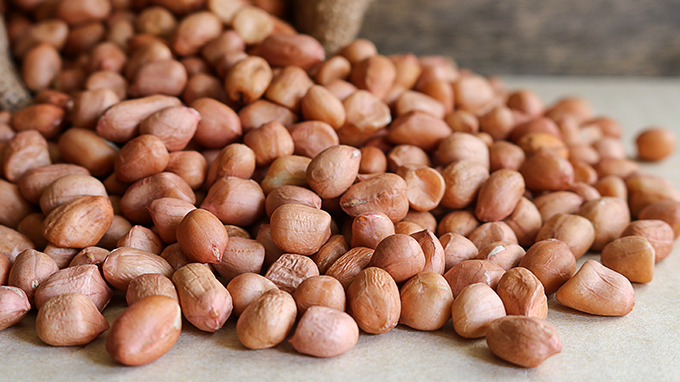Low-fat milk is the best source of calcium
It is well known that milk is the best source of calcium required by the human body. It contains more calcium (about 1mg of calcium per 1ml of milk) and has a higher absorption rate (30% or more, which is related to milk intake) (Related to calcium nutritional status of human body). On the other hand, ordinary milk also contains more fat (about 3.2%), and the content of saturated fatty acids is higher.
Chinese Dietary Guidelines 2007 compiled by the Chinese Nutrition Society recommends drinking 300ml of milk or equivalent milk products every day. Calculated by drinking 300ml of milk per day, you can consume about 300mg of calcium. This amount can meet 37.5% of the daily calcium requirements of children over 4 years old and ordinary adults; or it can meet the needs of adolescents, pregnant women (mid-term) and “elderly people” over 50 years old. 30% of the daily calcium requirement, or 25% of the daily calcium requirement of pregnant women (late stage) and nursing mothers. These figures show that just 300ml of milk per day is not enough to meet all the calcium needs. People must also consume more calcium (62.5~75% of the total calcium requirement) through other means, such as soy products and vegetables. .
Naturally, a question arises: Under the premise of economic conditions and acceptable taste, can you drink more milk to ensure adequate calcium intake? This question is slightly more complicated , Need to discuss by age (for those who lack patience or time, you can skip the following analysis and directly read the last paragraph of this article).
Infants aged 0~6 months should use milk (breast milk or formula milk) as the main food; infants aged 6-12 months should first guarantee a milk volume of 600~800ml (" "Dietary Guidelines for Chinese Residents 2007" on "Guidelines for Feeding Infants from June to 12 Months").
Children from 1 to 3 years of age should consume at least 350ml per day ("Chinese Resident Dietary Guidelines 2007" on "Feeding Guidelines for Children from 1 to 3 Years Old"), preferably 500ml (most experts'' views) Milk or equivalent dairy products.
Children aged 4-6 (preschool children) should drink 300~600ml of milk every day ("Chinese Resident Dietary Guidelines 2007" on "Dietary Guidelines for Preschool Children").
In order to ensure an appropriate calcium intake level and promote normal growth and development of children, the recommended amount of milk for each age group above is large (more than 300ml). The amount of fat ingested from this is a question worth discussing. Calculated with 500ml of milk, it contains about 16g of fat, which is still relatively large-roughly equivalent to the fat content in 2, 3 eggs or 4, 5 lean pork. However, because existing theories believe that the proportion of fat in the diet of children before the age of 6 can be higher (the fat supply ratio of each age group ranges from 30% to 50%, the younger the age, the higher the fat supply ratio ) Therefore, although the children of the above-mentioned age group have a relatively high milk intake, the higher fat content is not a problem.
However, for children over 6 years old, adults, and the elderly, more (more than 300ml) milk contains more fat will become a problem. Because for these people, the reasonable energy supply ratio of dietary fat is 20% to 30% (that is, no more than 30%). So, what should we do to drink more (more than 300ml per day) some milk to ensure adequate intake of calcium and avoid excessive intake of fat? The Dietary Guidelines for Chinese Residents 2007 is clear on this issue Recommendations: Drink low-fat or skimmed milk.
According to the "Food Nutrition Labeling Management Regulations" implemented from May 1, 2008, the so-called "low-fat milk" refers to the fat content in milk ≤1.5% (common milk is 3.2%); "Skimmed milk" Refers to the fat content in milk ≤0.5%. The content of calcium in low-fat or skimmed milk is the same as that of ordinary milk, but the fat content is only 1/2 to 1/6 of ordinary milk. Daily intake of 600ml (two times the usual recommended amount of 300ml) low-fat or skimmed milk, calcium intake can reach 600mg (meeting the average adult calcium needs 75%), but the fat intake is only 300ml of ordinary milk Flat or less 2/3. Therefore, as far as calcium and fat are concerned, low-fat or skimmed milk is the best source of calcium. For people over 6 years of age, when the daily milk consumption exceeds 300ml (this is very beneficial to ensure calcium intake, especially for adolescents, pregnant women, nursing mothers and the elderly), low fat should be used (all or part) Or skimmed milk products. There are currently many low-fat or non-fat milk brands on the market, but their consumption is low and their market share is very small. Many people are not used to drinking low-fat or skimmed milk and think it has a poor taste. The description of Dalian people is "water is awkward"-fat is the only source of milk flavor. After removing most of the fat, low-fat milk or skim milk taste It must be a bit "water".
Related Articles

- Can I drink tea for pregnancy
- Pregnancy is the most important event in a woman’s life. How to get pregnant smoothly and how to conceive a healthy baby is a problem that every couple and every family are very concerned a
- 2020-08-03

- What are the nutritional characteristics of nuts
- Nuts are one of the small foods that people like very much nowadays. They are rich in nutrients, high in protein, oil, minerals, and vitamins. They have excellent effects on human growth an
- 2020-08-03

- Celery leaves
- It is a habit of many people to eat celery and not to eat leaves. I think the leaves are just scraps. In fact, it is just wrong here. Almost all vegetables with leaves have a common featur
- 2020-08-03

- Is a cookie a nutritious food
- Biscuit is the most common snack food, but if it is said that biscuit is not nutritious, it seems to have aggrieved it. Every food has nutrients, even instant noodles or biscuits.
- 2020-08-03

- How to make a quick nutritious breakfast
- People often say that eating like an emperor for breakfast, like an aristocrat for lunch, and like a beggar for dinner will be healthier. How can I prepare a nutritious breakfast in 15 min
- 2020-08-03

- Can gout drink alcohol?
- Patients with gout should drink more water than wine. Gout diet is stricter, and even exceeds the dietary contraindications of diabetes, hypertension and high blood fat. Strict dietary tabo
- 2020-08-03
